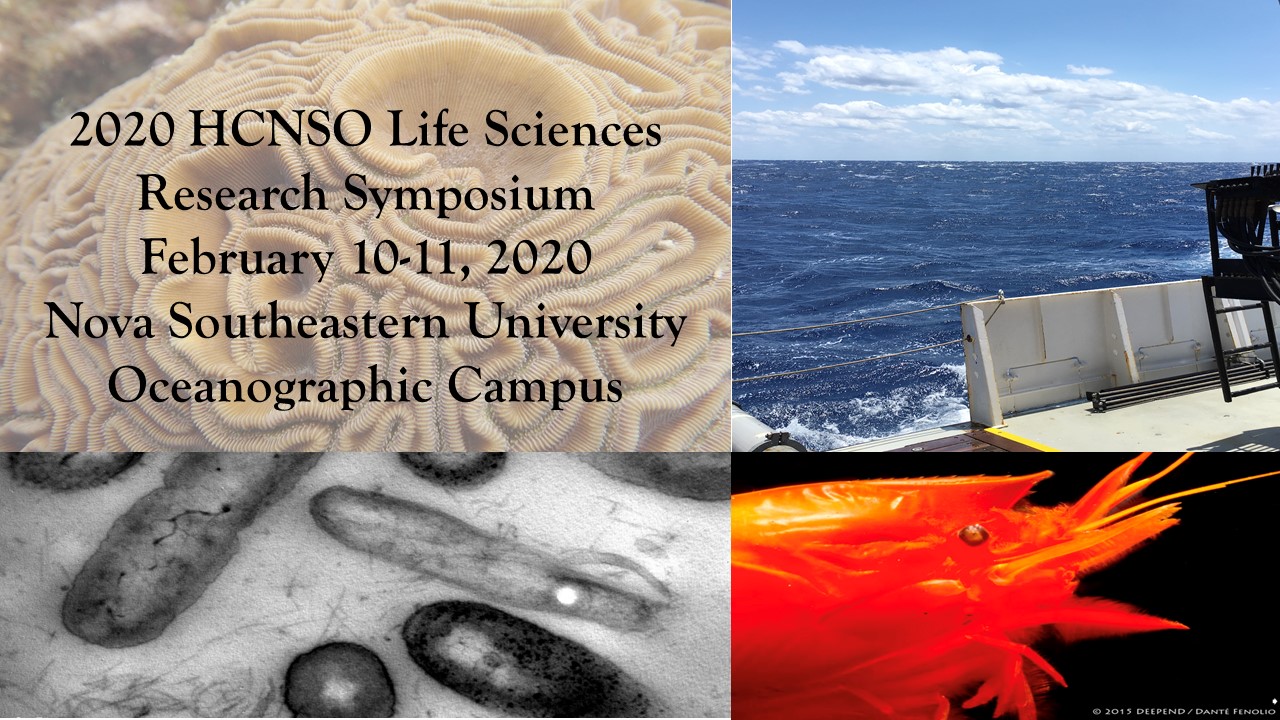Spatial comparison of bluefin tuna larval growth rates and their nitrogen isotopic signatures
Location
HCNSO Guy Harvey Oceanographic Center Nova Southeastern University
Start
2-10-2020 10:15 AM
End
2-10-2020 10:30 AM
Type of Presentation
Oral Presentation
Abstract
Atlantic bluefin tuna (ABFT), Thunnus thynnus is an oceanic top predator that undertakes long distance migrations from its common feeding grounds in the NE Atlantic. As adults, ABFT is an important fishery resource worldwide, however during the larval stage it is a key species in the corresponding ecosystems of its two well-established spawning areas: the Gulf of Mexico (GOM) and the Balearic Sea (MED). Trophic studies using stable isotopes analysis (SIA) have proven useful in marine food webs and have been used to compare larval ABFT isotopic signatures in each spawning area. During the first few days of life (preflexion ontogenetic stage), the SIA signature obtained via maternal transmission predominates in larval ABFT but then decreases during the flexion and postflexion stages. We estimated values for the isotopic signature from the early larval stages from a concurrent trophic study and for the first time, daily increment growth and otolith biometry were analyzed along with nitrogen SIA (δ15N) for preflexion and postflexion ABFT larvae. These values were compared for the GOM and MED for the same corresponding spawning seasons in 2014. Larvae were split in two groups: an optimum growth and a less efficient growth using residual analysis. We found significant intra-population differences with higher growth rates and larger otoliths that showed wider increments associated with lower values of δ15N for preflexion larvae. The two groups had a direct relationship between growth potential and δ15N at preflexion larval stages for each spawning area. The postflexion larvae showed a different pattern. These results point to the importance of the maternal isotopic signatures observed in faster larval growth associated with lower δ15N values. Faster growth during the early life stages can improve overall larval survival and may represent a key maternal legacy for this species.
Spatial comparison of bluefin tuna larval growth rates and their nitrogen isotopic signatures
HCNSO Guy Harvey Oceanographic Center Nova Southeastern University
Atlantic bluefin tuna (ABFT), Thunnus thynnus is an oceanic top predator that undertakes long distance migrations from its common feeding grounds in the NE Atlantic. As adults, ABFT is an important fishery resource worldwide, however during the larval stage it is a key species in the corresponding ecosystems of its two well-established spawning areas: the Gulf of Mexico (GOM) and the Balearic Sea (MED). Trophic studies using stable isotopes analysis (SIA) have proven useful in marine food webs and have been used to compare larval ABFT isotopic signatures in each spawning area. During the first few days of life (preflexion ontogenetic stage), the SIA signature obtained via maternal transmission predominates in larval ABFT but then decreases during the flexion and postflexion stages. We estimated values for the isotopic signature from the early larval stages from a concurrent trophic study and for the first time, daily increment growth and otolith biometry were analyzed along with nitrogen SIA (δ15N) for preflexion and postflexion ABFT larvae. These values were compared for the GOM and MED for the same corresponding spawning seasons in 2014. Larvae were split in two groups: an optimum growth and a less efficient growth using residual analysis. We found significant intra-population differences with higher growth rates and larger otoliths that showed wider increments associated with lower values of δ15N for preflexion larvae. The two groups had a direct relationship between growth potential and δ15N at preflexion larval stages for each spawning area. The postflexion larvae showed a different pattern. These results point to the importance of the maternal isotopic signatures observed in faster larval growth associated with lower δ15N values. Faster growth during the early life stages can improve overall larval survival and may represent a key maternal legacy for this species.


